AMD Kaveri Review: A8-7600 and A10-7850K Tested
by Ian Cutress & Rahul Garg on January 14, 2014 8:00 AM ESTDrawing Performance Conclusions
As I progressed through the testing for this review, I became aware of trends in two things: absolute performance, in terms of numbers, and generational improvements across platforms. With AMD moving the Bulldozer based architectures from Piledriver in Trinity and Richland to Steamroller in Kaveri, the base CPU design has had a relatively long run in order to be optimized to the limitations on the CPU side. Obviously AMD has also had a chance to change the lithography node in there as well, and as such has optimized for design rather than performance. This matters a great deal when we look at the power banding (45W, 65W, 95W) and performance in each segment.
In order to display just how much Kaveri has grown in relation to the previous generations, I processed our mountain of data to show graphs where percentage gain against the older generations really does matter. As mentioned previously in this review, it all depends on whether the software can take advantage of the new features afforded by the architecture. In this review we have spent a lot of time discussing advantages for Kaveri in terms of compute (HSA, hUMA, hQ) and gaming (Mantle, TrueAudio), but some of these are still a little way off for software integration. So what does that translate to if you are looking for an APU today – does Kaveri still expand its wings with the integration of the GCN architecture, or does it lag behind due to the lithography node no longer being optimized for frequency. The proof is in the results.
IGP Gaming, 1280x1024
For the 100W APUs at 1280x1024, there is almost no movement between the Richland and the Kaveri APUs, except for Company of Heroes which would seem to leverage the extra SPs more than the MHz available.
45W APUs are clearly in vogue at 1280x1024, each of them providing a good bump over Richland.
IGP Gaming, 1680x1050
1680x1050 sees more benefit for the 100W APUs, but the 45W APUs still show big leaps.
IGP Gaming, 1920x1080
At 1080p the effects are more pronounced all around.
CPU Timed Benchmarks
Unfortunately the CPU timed benchmarks at 100W are bit over the place. Here we are dealing with an IPC gain but MHz deficit, and each benchmark has a different way of dealing with it. For Agisoft, MHz wins, but for Xilisoft, the Kaveri improvements work out well for the system.
At 45W the situation is a lot more clearer, and the newer APUs have the advantage, especially in Adobe After Effects.
CPU Score Benchmarks
45W still makes the biggest jump when it comes to score based CPU benchmarks.
IGP Synthetics
I never like putting much thought into the synthetic results – here both the 100W and the 45W range are showing good improvements all around. 3DMark 06 has the most trouble getting improvements as it relies more on the grunt, rather than the features that Kaveri affords.
IGP Compute
Off the bat we can see just how much of a difference the Kaveri GPU Compute can make over previous APUs. This is still without hUMA fully being in effect while we wait for a proper driver and software stack to become available.
Up to a +222% boost from Kaveri is amazing for a 45W part.
AMD vs Intel
For a little tete-a-tete, putting the 65W Iris Pro up against the 65W Kaveri seems like a good idea. To add to the mix, due to the extreme price difference of Iris Pro in this equation, we also add the 95 W Kaveri for comparison.
It is interesting to note that at the lower resolutions the Iris Pro wins on most benchmarks, but when the resolution and complexity is turned up, especially in Sleeping Dogs, the Kaveri APUs are in the lead.


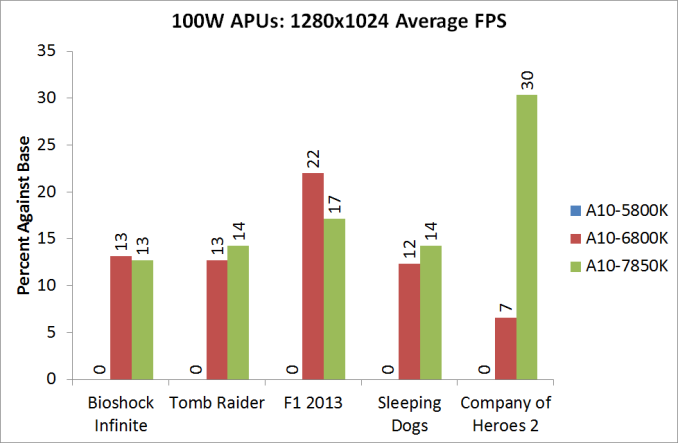
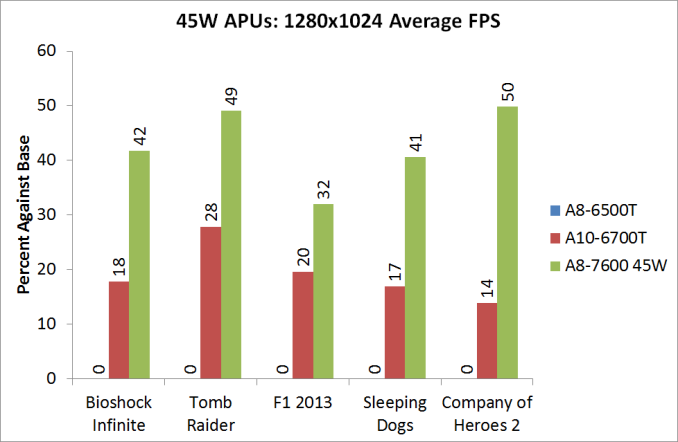
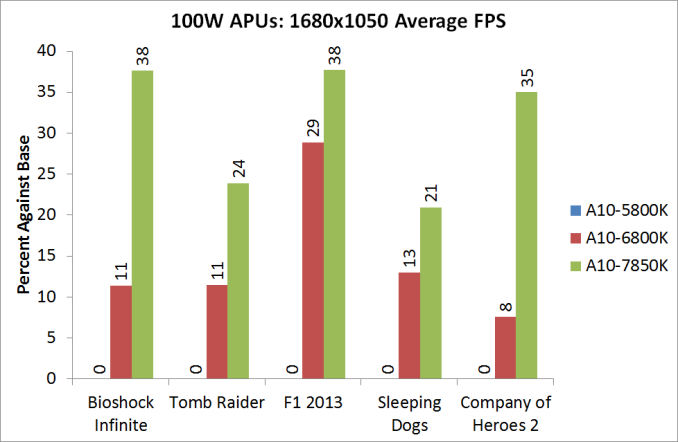
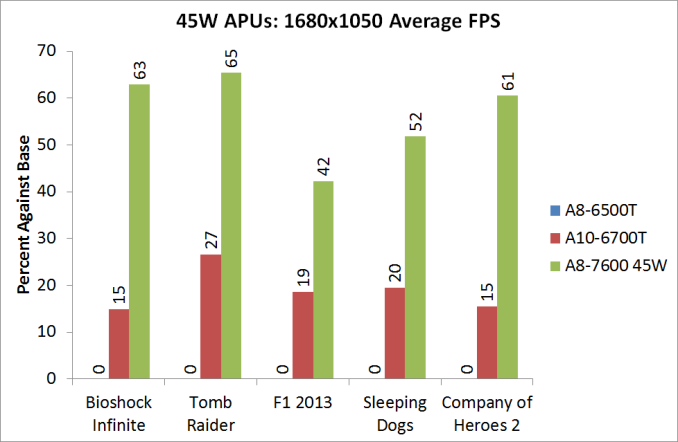
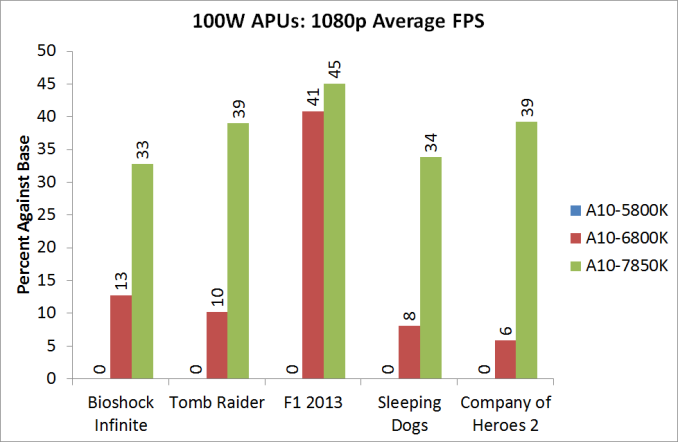
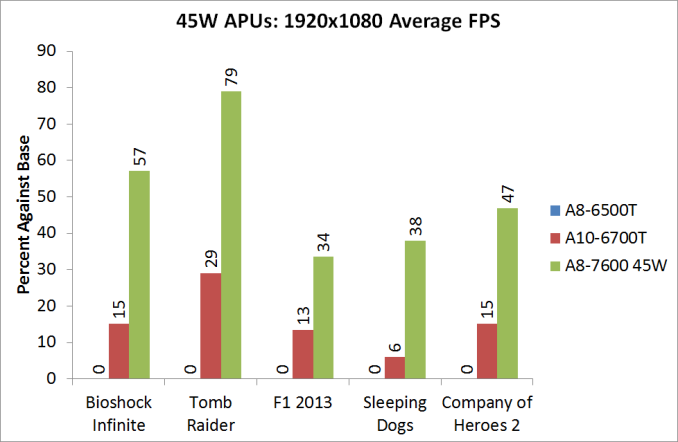
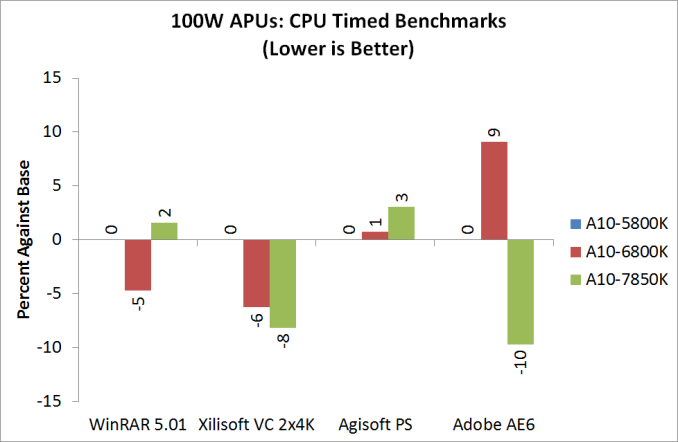
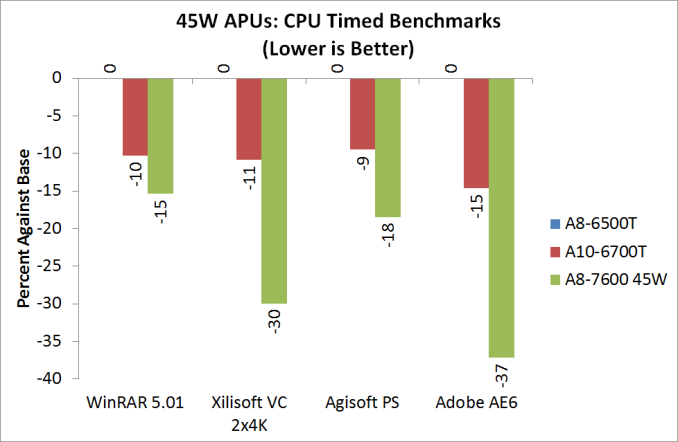
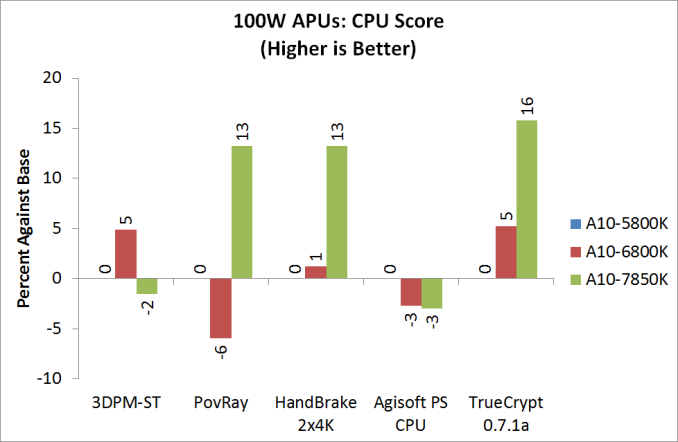
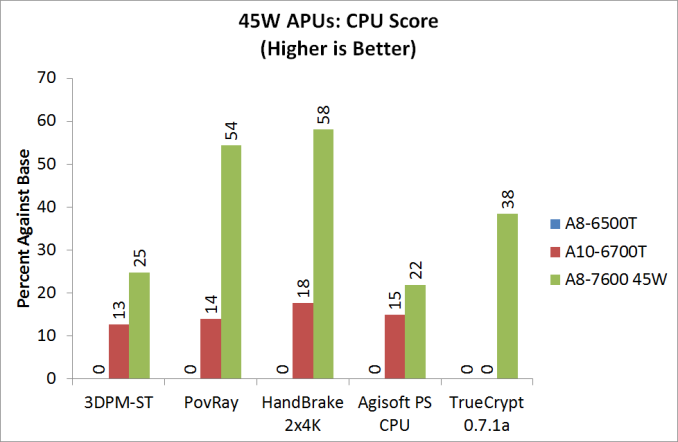
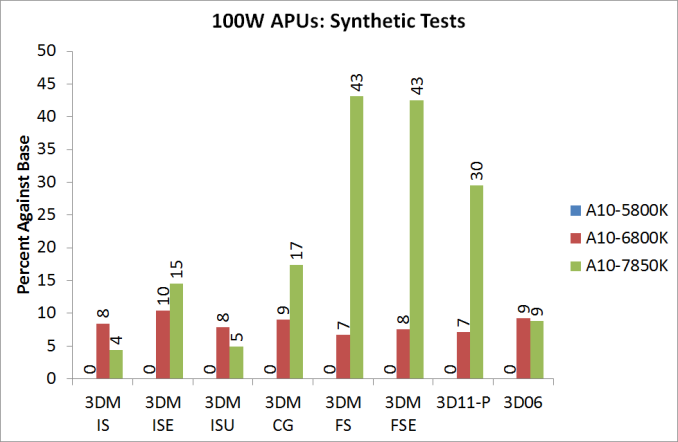
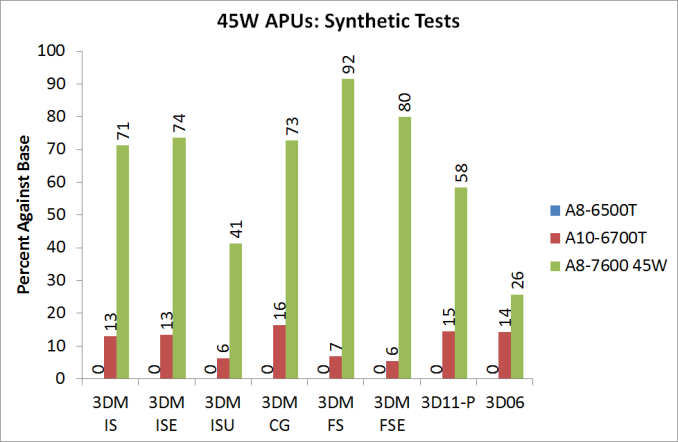
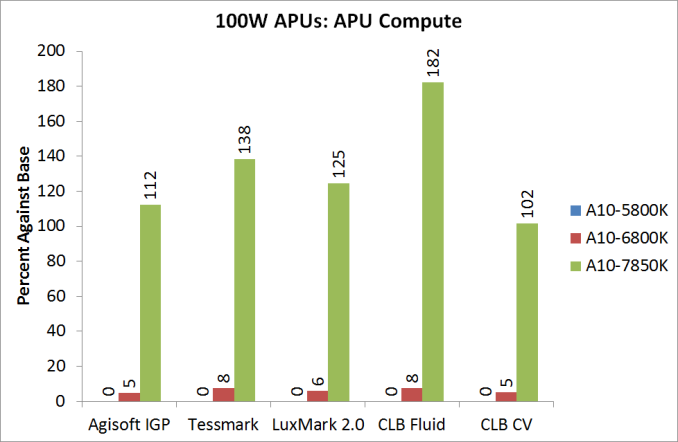
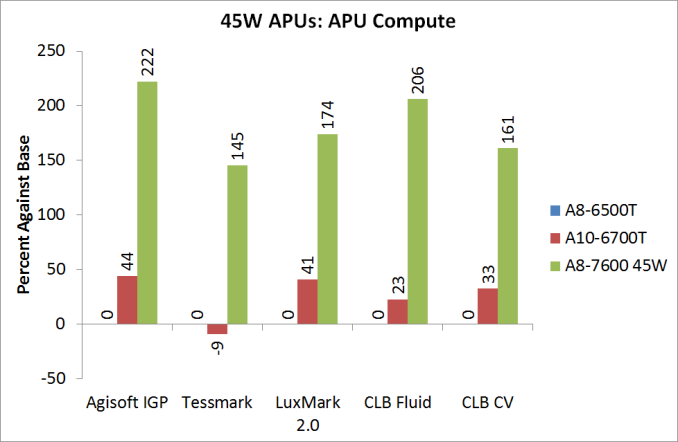
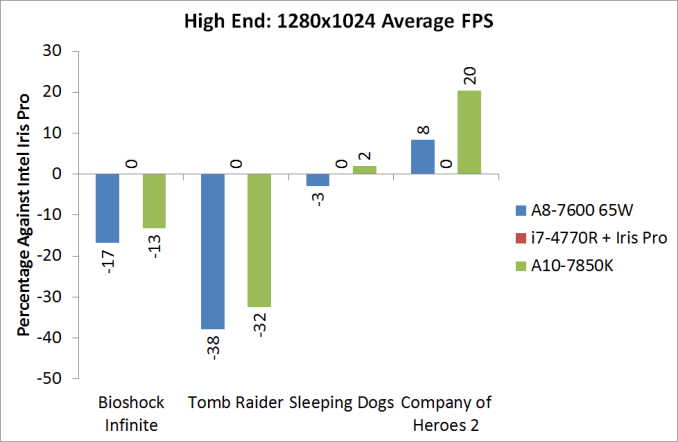
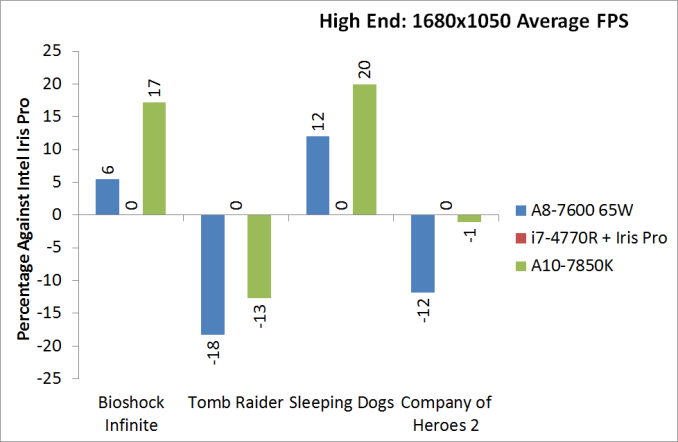
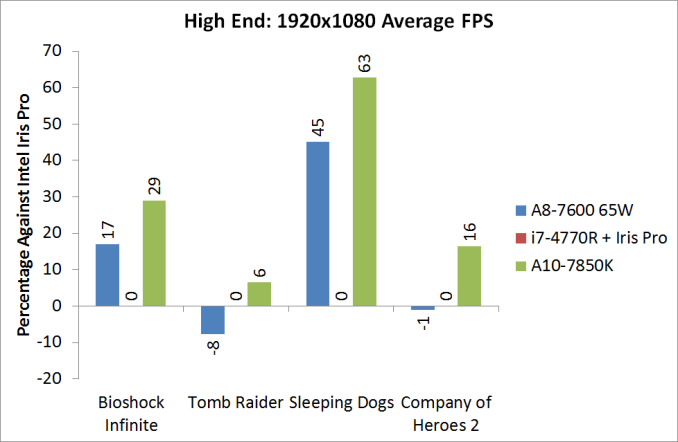








380 Comments
View All Comments
jjj - Tuesday, January 14, 2014 - link
lol now that AMD is paying you,you jumped at the other extreme , what do you get over Richland and how does that deserve a positive conclusion? (and maybe a reminder is needed A10-6800K is 140$)Drumsticks - Tuesday, January 14, 2014 - link
The author recognized that 100W TDP isn't really any different...? The 45W more mainstream range is where things are a lot more interesting, but please, ignore the 30+% gains.Conduit - Tuesday, January 14, 2014 - link
I have been waiting almost 2 years for a mobile Kaveri telling myself the wait will be worth it. Looks like it actually may be as Kaveri performs better at lower TDP's than Trinity and Richland.Hubb1e - Tuesday, January 14, 2014 - link
This guy actually gets it. These should make very nice cheap laptops able to actually play a game or two without vomiting all over themselves. At 95W the gains are not there, but at 45W it's impressiveJDG1980 - Tuesday, January 14, 2014 - link
What an odd choice of benchmarks. Why not use Photoshop (which supports OpenCL and is an important real-world application) instead of Agisoft (who?) I can't help but wonder if Agisoft paid for their inclusion in Anandtech's benchmark suite.ddriver - Tuesday, January 14, 2014 - link
You may notice that the entire review is not exactly OpenCL compute rich... I mean even for gaming cards AT usually includes several OpenCL benchmarks, but not for this product, where it is supposed to be its strongest point???Conduit - Tuesday, January 14, 2014 - link
I have to say, the 45W A8-7600 kicks ass. It's competitive with the 100W A10-5800K, I think that's where the benefit of Kaveri lies, in the low TDP department.UtilityMax - Tuesday, January 14, 2014 - link
Indeed. However, I personally would like to see benchmarks that measure the power draw. The 65watt TDP Richland A10s were nearly as power thirsty as the +100watt TDP parts. A8 does look interesting.thegreatjombi - Tuesday, January 14, 2014 - link
Any chance we can get HD5200 and HD5400 benches? The 5000 series has started to catch up with AMD in terms of GPU Compute. I am curious if AMD has left Intel in the dust once again, or has Intel actually made a big enough leap to stay in the game.thegreatjombi - Tuesday, January 14, 2014 - link
Oh! It seems the 5000 series is just omitted in the CPU Performance benchmarks? Why is that?